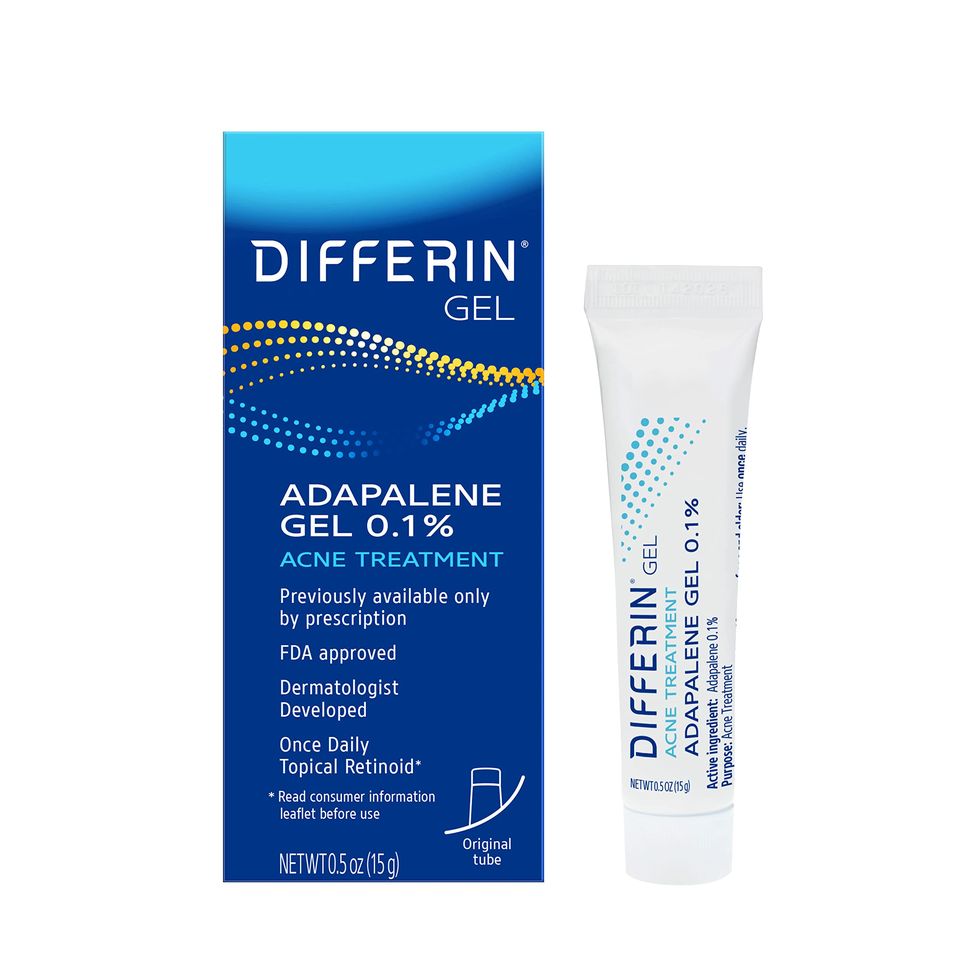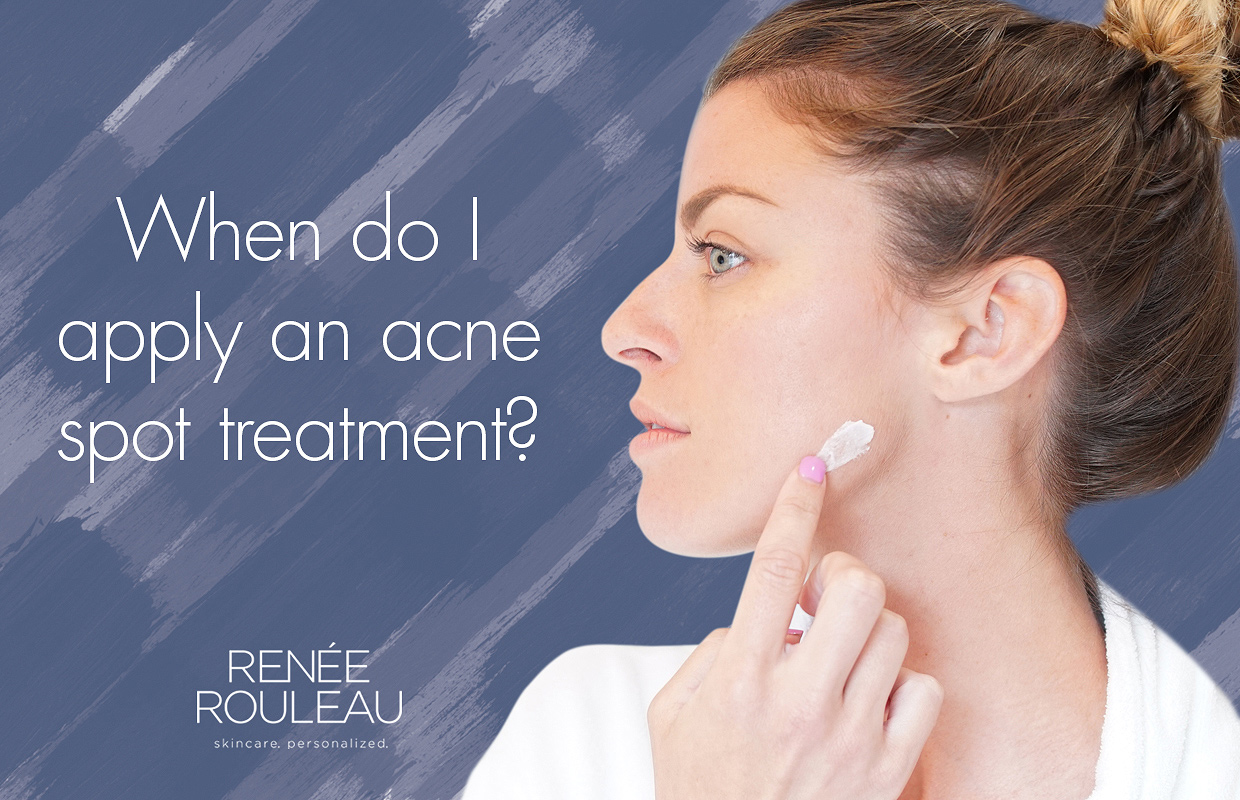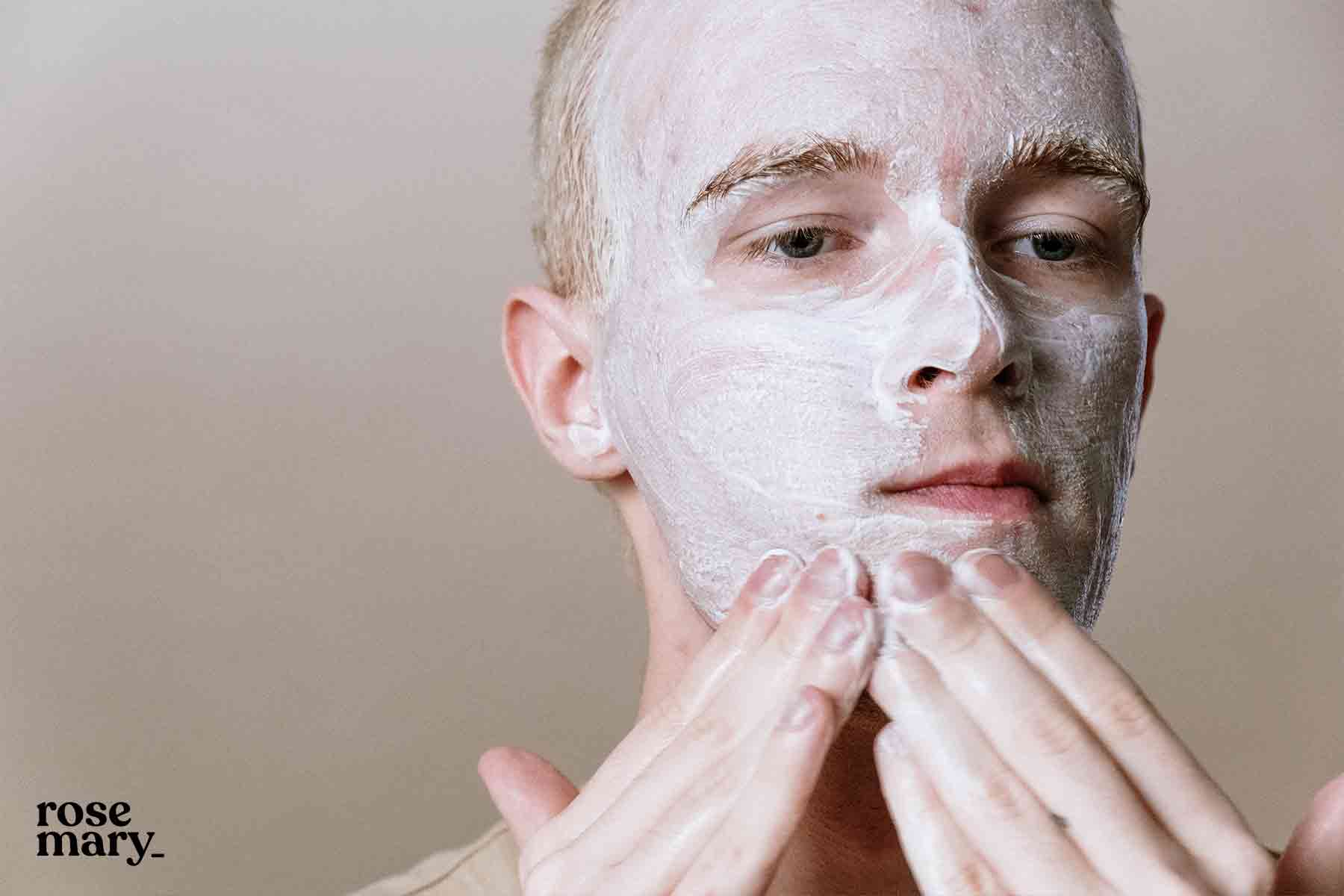To apply acne cream effectively, cleanse your skin and apply a pea-sized amount to the affected area. Gently rub the cream in until fully absorbed.
Dealing with acne can be a challenging experience, but the right treatment routine makes all the difference. Acne creams, containing active ingredients like benzoyl peroxide or salicylic acid, are pivotal in managing breakouts. For optimal results, starting with a clean base is essential.
Washing your face with a gentle cleanser removes impurities and excess oil, creating an ideal canvas for treatment. After patting the skin dry, a small dab of acne cream should be applied directly to the spots in question. This targeted approach ensures that the potent ingredients work precisely where needed without overburdening the rest of your skin. It’s crucial to follow the specific product instructions and to use sunscreen during the day, as some acne treatments can increase skin sensitivity to sunlight. By incorporating this method into your daily skincare regimen, you can tackle acne head-on and promote a clearer, healthier complexion.
The Acne Battle: Why Creams Are Central
Struggling with acne is like a never-ending battle for many. It’s not just about pimples. It’s about the way they make you feel. Acne creams play a vital role in this fight. They offer hope. They promise clearer skin. Let’s dive into understanding why these creams are so important.
Understanding Acne And Its Causes
Before you can fight acne, you need to know your enemy. Acne forms when oil, dead skin, and bacteria block pores. This can cause whiteheads, blackheads, or pimples. Many things can trigger acne:
- Hormonal changes
- Stress
- Bad skincare habits
- Some medications
Knowing these causes helps us choose the right cream.
Role Of Creams In Acne Treatment
Acne creams are not just any creams. They are special. They have ingredients that target acne directly. Here’s what they do:
- Reduce oil production
- Speed up skin cell turnover
- Fight bacterial infection
- Reduce inflammation
Applying cream correctly makes all the difference. Use a clean finger or cotton swab. Put a tiny amount on each pimple. Be gentle. Don’t rub hard. Use every day for best results.

Credit: www.cosmopolitan.com
Choosing The Right Acne Cream
Finding the perfect acne cream is like discovering a secret weapon for your skin. It’s not just about grabbing any tube off the shelf. Your skin is unique, and so is the solution it needs. Let’s explore how to choose the cream that fits your skin’s battle against acne.
Active Ingredients To Look For
The magic happens in the ingredients. Look for these power players:
- Salicylic Acid: Unclogs pores and reduces swelling.
- Benzoyl Peroxide: Kills bacteria and clears dead skin cells.
- Retinoids: Boost cell turnover and unclog pores.
- Sulfur: Dries out the surface of the skin to absorb excess oil.
- Niacinamide: Soothes redness and inflammation.
Creams Vs. Other Acne Treatments
Not all treatments are created equal. Here’s a quick comparison:
| Treatment Type | Pros | Cons |
|---|---|---|
| Creams | Targeted application, gentle on skin | May require longer to see results |
| Gels | Stronger, faster results | Can be drying or irritating |
| Patches | Concentrated treatment, protects from picking | Limited to spot treatment |
| Cleansers | Part of daily routine, removes impurities | Less potent than direct treatments |
Before Application: Preparing Your Skin
Struggling with acne can be frustrating, but using acne cream correctly makes a big difference. Preparing your skin before application is crucial for the treatment to work effectively. This part of your skincare routine sets the stage for the acne cream to penetrate deeply and do its job. Let’s look at the essential steps to prepare your skin.
Cleansing: The First Step
Before applying any acne cream, start with a clean canvas. Use a gentle cleanser to remove dirt, oil, and makeup from your skin. Pat your face dry with a soft towel. This ensures your pores are open and ready to absorb the acne treatment. Never apply acne cream on dirty skin; it can lead to more breakouts.
Exfoliating: Clearing The Way
Exfoliation removes dead skin cells that clog pores. Use a mild exfoliant once or twice a week. This step makes it easier for the acne cream to reach the problem areas. Be gentle to avoid skin irritation. Remember, over-exfoliating can harm your skin and worsen acne.
Applying Acne Cream Effectively
When battling acne, using the right cream is only half the battle. Knowing how to apply acne cream effectively can make all the difference. Let’s dive into the best practices to ensure your skin reaps the full benefits of your acne treatment.
Quantity Matters: How Much To Use
Getting the quantity right is crucial for acne cream effectiveness. Too little may be ineffective, while too much can irritate. Follow these guidelines:
- Pea-sized amount: Usually enough for the entire face.
- Dot method: Apply small dots directly to blemishes if treating individual spots.
- Read instructions: Some products may require different amounts.
Techniques For Even Application
Even application ensures each acne-prone area gets treated. Here’s how to apply evenly:
- Wash hands: Clean hands prevent spreading bacteria.
- Start with a clean face: Use a gentle cleanser before application.
- Use fingertips: Spread the cream in a thin, even layer.
- Avoid rubbing: Gently pat the cream into the skin until absorbed.
Remember, gentle and consistent application brings out the best in your acne cream. Give it time to work, and soon, clearer skin will greet you in the mirror!
Timing Is Everything: When To Apply
Finding the right moment to apply acne cream can be tricky. Yet, it’s crucial for effectiveness. Think of acne cream as a timely ally in your skincare regimen. It requires perfect timing to unleash its full potential. Your skin’s absorption rates and the cream’s active ingredients play a pivotal role in this timing. Let’s explore how to seamlessly integrate acne treatments into your daily life.
Integrating Into Your Daily Routine
Consistency leads to clear skin. Integrate acne cream application into your morning or evening routines. Place the cream next to your toothbrush or set a reminder on your phone. This ensures you don’t forget this important step. A smooth integration into your daily life is key for continuous skin care.
Day Vs. Night Application
Acne creams differ in their formulation. Some are designed for daytime use, while others work best at night. Day creams often contain sunscreen to protect skin from harmful UV rays. They’re lightweight and sit well under makeup. Night creams, on the other hand, are typically more potent. They work overnight to reduce inflammation and heal the skin.
| Time of Day | Benefits |
|---|---|
| Morning | Protection from UV rays, prime skin for makeup |
| Night | Intense treatment, skin recovery |
- Morning: Light formula, UV protection.
- Night: Stronger ingredients, repair focus.
Applying the right cream at the right time can make a significant difference. It ensures that your skin receives the care it needs, exactly when it needs it. Remember, for best results, always follow the specific instructions on your acne cream’s packaging.
Post-application: Maximizing Effectiveness
After applying acne cream, certain steps can boost its power. Your skin care doesn’t end with just the treatment. Let’s explore how to lock in the benefits and protect your skin further.
Moisturizing After Acne Cream
Moisture is key for healing. Acne treatments can dry out skin. To counter this, use a non-comedogenic moisturizer. This type of moisturizer hydrates without clogging pores. Wait a few minutes after applying acne cream before you moisturize. This lets the treatment absorb fully.
Sun Protection Considerations
Acne creams often make skin sensitive to the sun. To safeguard your skin, apply a broad-spectrum sunscreen every morning. Choose SPF 30 or higher. Remember to reapply every two hours if you’re outside. Wearing protective clothing, like hats and long sleeves, also helps.
| Step | Product | Tip |
|---|---|---|
| 1 | Moisturizer | Choose oil-free and non-comedogenic |
| 2 | Sunscreen | Apply SPF 30+, reapply every 2 hours |
- Do not touch your face often after applying acne cream.
- Avoid direct heat on your face, like hair dryers or the sun.
- Drink plenty of water to stay hydrated and help skin heal.
Common Mistakes To Avoid
Applying acne cream seems straightforward, but common mistakes can hinder your skin’s improvement. To ensure effective treatment, let’s dive into some errors you’ll want to steer clear of.
Overapplication Woes
More cream does not equal faster results. Using too much can actually irritate your skin further. Here’s what to remember:
- Pea-sized amount: Usually enough for the entire face.
- Spread evenly: Avoid piling on spots.
- Patience is key: Results take time, usually several weeks.
Mixing Incompatible Products
Certain ingredients don’t mix well and can cause more harm than good. Check your products to avoid these clashes:
| Active Ingredient | Avoid Mixing With |
|---|---|
| Benzoyl Peroxide | Retinoids, Vitamin C |
| Salicylic Acid | AHA/BHA, Vitamin C |
Read labels carefully and consult your dermatologist for the best advice on product synergy.

Credit: www.cosmopolitan.com
Monitoring Progress And Adjusting Your Routine
As you embark on your journey to clear skin, it’s crucial to track your skin’s response to acne cream. A personalized approach ensures the best results. Adjusting your skincare routine becomes simpler with careful monitoring. Let’s explore how to keep tabs on your progress effectively.
Keeping A Skin Diary
Maintaining a skin diary helps you notice changes and patterns. Note down daily observations, reactions, and any new breakouts. Include details like:
- Date and time of application
- Amount of cream used
- Skin’s condition before and after application
- Any side effects or discomfort
This diary acts as a personalized skin history. Use it to tweak your routine for better outcomes.
When To See A Dermatologist
If progress stalls or your skin worsens, consult a dermatologist. Look out for signs like:
| Sign | Action Required |
|---|---|
| Persistent acne | Seek professional advice |
| Severe side effects | Discontinue use, contact a dermatologist |
| No improvement after several weeks | Get a tailored treatment plan |
Professional guidance ensures you use the right products in the correct way.

Credit: blog.reneerouleau.com
Frequently Asked Questions
Should You Rub In Acne Cream?
Yes, gently rub in acne cream until it’s fully absorbed. Use a pea-sized amount to avoid irritation and follow the product’s instructions for best results.
How To Apply Acne Cream?
Begin by cleansing your skin gently. Pat dry and apply a pea-sized amount of acne cream. Spread it evenly over the affected area. Avoid eye contact and wash hands after application. Use as directed by your healthcare provider.
How Long Should I Leave Acne Cream On?
Leave acne cream on for the duration specified by the product instructions or your dermatologist, typically ranging from 5 to 20 minutes for full effectiveness. Always follow the specific guidance for your chosen product.
Should Acne Treatment Go On Before Or After Moisturizer?
Apply acne treatment directly to clean skin before using moisturizer. This order ensures better absorption of the treatment.
Conclusion
Navigating the world of acne treatment can be tricky, but applying your acne cream correctly makes a difference. Remember, gentle cleansing sets the stage for effective application. Dab, don’t rub, for optimal absorption and reduced irritation. Stick to your routine and consult a dermatologist for persistent issues.
Clear skin is within reach with the right approach and patience.

